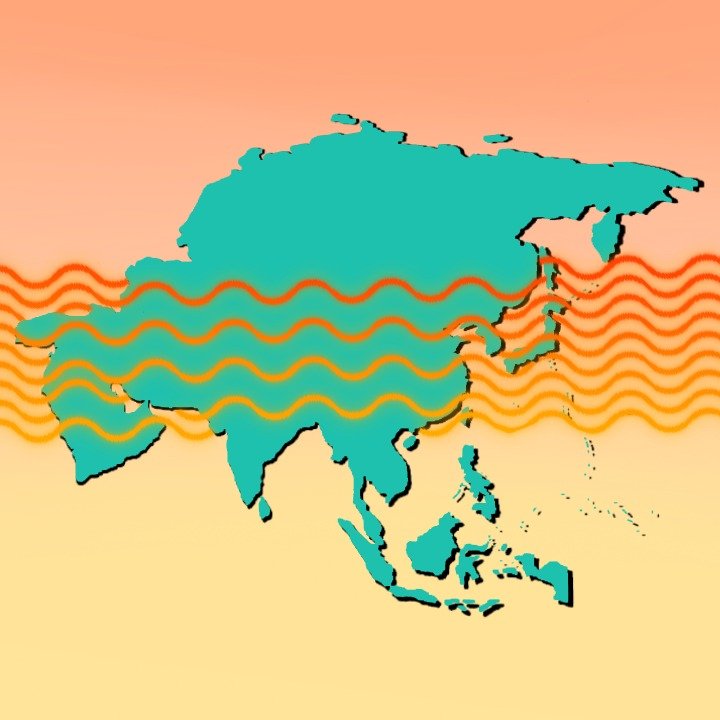By: Andrew Shibuya
It seems as though only months or weeks pass nowadays between environmental global crises. While heat waves, floods, and the like are by no means novel, the twenty-first century has undoubtedly seen an unrelenting torrent of environmental disasters. In the past week alone, a record-breaking heat wave in the Pacific Northwest left nearly one-hundred dead, two separate oil fires burning on the surface of the ocean in both the Gulf of Mexico and the Caspian Sea, and innumerable small fires blazing across the West Coast following Fourth of July celebrations.
The heat wave in the Pacific Northwest impacted Oregon the most, with a total of 95 heat-related deaths on Sunday alone. Temperatures throughout the state reached a record-high of 117 degrees, leaving those without air conditioning or access to a cooler environment the most vulnerable. The Oregon government attempted to mitigate the effects of the heat wave by offering numerous cooling centers and even air conditioners to those at risk of harm.
Of course, the June heat wave that struck the Pacific Northwest was not unusual, nor will it be an outlier in the future by any means. In talking about the heat wave, Oregon Governor Kate Brown most succinctly stated, “This is a harbinger of things to come.” Other Oregon officials echoed this sentiment, with Public Health Director Jessica Guernsey writing the following in a press release for the heat wave: “This tragic event is almost certainly a glimpse into the future for Multnomah County, Oregon, the nation and the world. The impacts of climate change with heat waves, severe winter weather, wildfires, floods, and other rippling effects are happening now and will happen with more frequency for the foreseeable future.”
And while these sentiments are hardly prescient, on the other coast of the United States, a similar heat wave scorched the Northeast. While likewise record-breaking in its own right, the intensity of the East Coast’s heat wave does not come close to matching the Northwest’s. And still, a heat advisory was issued in New York City, and Boston and Philadelphia both issued heat health emergencies.
Of course, this past week was only one of the first weeks of summer, and more heat waves and heat related disasters are likely ensuing. Another heat wave warning has been issued for this coming weekend in California, from the desert to the Bay Area. California also has yet to enter its own “fire season,” which annually typically sees a handful of newsworthy fires that continue for several weeks, ravaging local communities and habitats.
This does not, however, mean that there is a lack of fires. This past Fourth of July weekend saw a marked increase in human caused wildfires. Already under a fire warning, California alone has seen hundreds of fires in the past several days as a result of holiday celebrations gone awry.
And all this is without mentioning the current drought plaguing the West Coast. From 2012 to 2016, California experienced its worse drought in over a millennium. The current drought finds many questioning the future of many essential Californian industries, such as farming, which will undoubtedly affect the largest economy in the United States.
Though one may be curious about the origin of these disasters–namely the drought and heat waves–one needs to look no further for evidence than the two oil fires on the high seas this past week. The fires, one in the Caspian Sea and one in the Gulf of Mexico, were both caused by oil explosions. The former is said to have been caused by the eruption of a “mud volcano,” or possibly a mud volcano interacting with a nearby gas field. They are still investigating the cause of this fire.
The fire in the Gulf of Mexico, however, was solely and indubitably man caused. A gas leak from an underwater pipeline by Mexico-owned gas company Pemex saw the inferno come about just off the coast of the Yucatan Peninsula. A Mexican official has stated that there was no spillage, but there is still no explanation for the blaze.
Given all this, and the increased quantity of these sorts of events yearly, one can only wonder what a solution might be, and if such a solution is even plausible. And as each new catastrophe arises, it seems as though they are becoming normalized, with no action taken besides Twitter outcry. Beside merely pointing fingers at each other and pushing the onus of the responsibility around, the multibillionaires, their corporations, and the government ought to be able to do something.
Of course, it’s not as simple as expecting those groups to fix these global issues, as it is wholly a worldwide effort. As trite as it might seem, solutions to global issues require the actions of whole global populations. But besides recycling, eating with the environment in mind, and similar small (yet important) actions, what is the average person to do? Still, corporations such as Amazon are allowed to pollute and produce millions of pounds of plastic waste annually without consequence. Furthermore, former president Donald Trump once pulled out of the Paris Agreement in the name of America’s economic interests.
And so, just as Robert Frost once pondered if the world would end in ice or fire, the answer to his question seems to be becoming most clear now. As economies and profits seem to be more important than humanity’s future, the world will continue to burn, oceans will continue to rise, and people will continue to die. And as is true with many great problems, the issue is easy to see and difficult to solve–whether humanity will rise to its challenge is another issue entirely.






